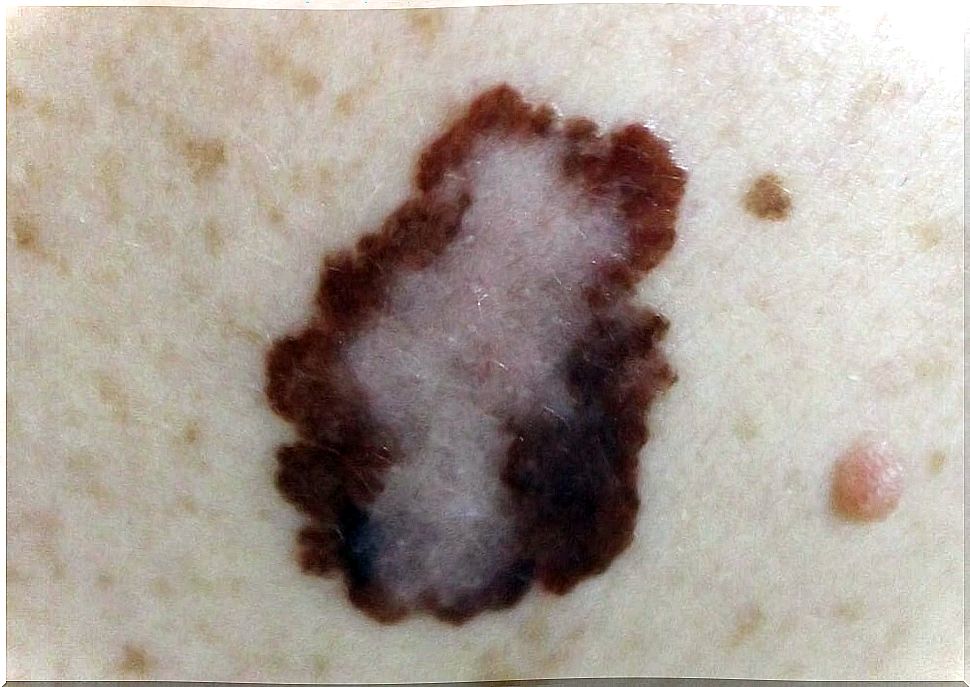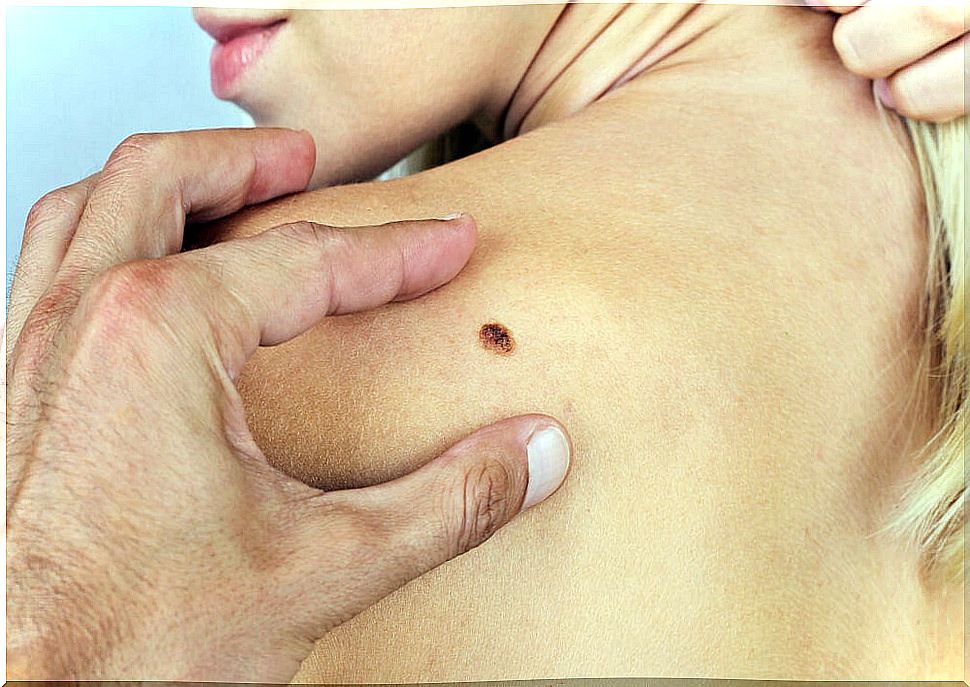Malignant Melanoma
The main way to prevent the appearance of malignant melanomas is to protect yourself from ultraviolet radiation, either from the sun or from artificial sources.
Malignant melanoma is a cancerous tumor that normally develops on the skin. Sometimes it can also appear on the mucous membranes or in other areas of the body. It is the deadliest form of skin cancer, because it spreads extremely easily to other parts of the body.
This type of tumor appears when melanocytes, melanin-producing skin cells, acquire cancerous characteristics. It is the third most common type of skin cancer, in fact, s u incidence has increased worldwide in recent decades. Likewise, the mortality rate associated with this pathology has increased.
Physicians frequently see consultations for pigmented skin lesions. In order to prevent, it is advisable that we assume that any lesion with these characteristics is a malignant melanoma. Early diagnosis is essential for the good prognosis of the disease.
Risk factors and types of malignant melanomas

Individuals most at risk for developing malignant melanoma are fair-skinned redheads, those with many moles, or those who frequently get sunburned. Only 25% of malignant melanomas derive from a pre-existing mole.
Generally, men have a tendency to develop malignant melanomas on the back, while in women, the most common area of appearance of this type of tumor is the legs. In general, malignant melanoma initially resembles a normal mole, which will gradually change, increasing in volume and acquiring a more irregular pattern .
We distinguish up to four types of malignant melanomas:
- Extensive and superficial. It corresponds to 70% of the cases. It appears mainly on the legs and trunk. It is a flat lesion, with some raised areas. It has a slow growth and presents different colors (gray, red, black, blue or brown).
- Nodular. It corresponds to 15% of the cases. It is a raised, black, blue or colorless lesion. It grows very quickly.
- Lentiginous. It covers between 5 and 10% of cases. It has the appearance of a papule or nodule and appears generally in older people. It is brown, black, blue, or without pigment. It grows slowly.
- Malignant lentigo. It corresponds to 5% of the cases. It appears in older people on the face, neck, or back of the hands. It is a flat lesion, with small, more voluminous areas. It has blue or gray tones and has a very slow growth.
Malignant melanoma diagnosis

As we mentioned before, whenever a strange mole appears on the skin or something similar to it, we should suspect that it is a malignant melanoma. There is a pattern called the “ABCDE rule” used to accurately detect these types of tumors. It is advisable to evaluate each skin lesion and observe if it has the following characteristics:
- A: Asymmetric, that is, it has an irregular shape.
- B: Ragged edges.
- C: Irregular coloring.
- D: Diameter greater than 6 mm.
- E: Evolution, that is, it changes over time.
When a lesion meets these characteristics, the doctor will order a biopsy or removal of the lesion. In both cases, a histopathological study is performed, that is, the removed tissue will be observed under the microscope to determine if it is a malignant melanoma. The depth of the same is also measured.
The main preventive measure against malignant melanoma is to protect yourself from ultraviolet radiation, both natural and artificial. We must avoid exposing ourselves to the sun’s rays, especially in the hottest hours of the day. On the other hand, an early diagnosis considerably increases the chances of a cure.
Complications and prognosis

There are malignant melanomas that are shallow, being considered superficial if they do not exceed 0.9 millimeters. They are the most frequent cases. They are called melanoma in situ and are the easiest to treat. Malignant melanomas that have not spread beyond their initial location have a high chance of being cured.
If the melanoma is deeper, the problem is usually more serious. In particular, it must be determined whether it has reached the nearest lymph nodes by studying the sentinel node.
The prognosis of a malignant melanoma depends on several factors:
- Location
- Thickness
- Mitotic rate, that is, how often cancer cells multiply.
- Invasion level
- Lymphoid infiltration
- Ulceration
Its evolution is also taken into account, however, the factor that most influences the prognosis is if the melanoma is localized or if, on the contrary, it has spread. In the first case the prognosis is very positive, while the second case usually gives rise to serious prognoses.









